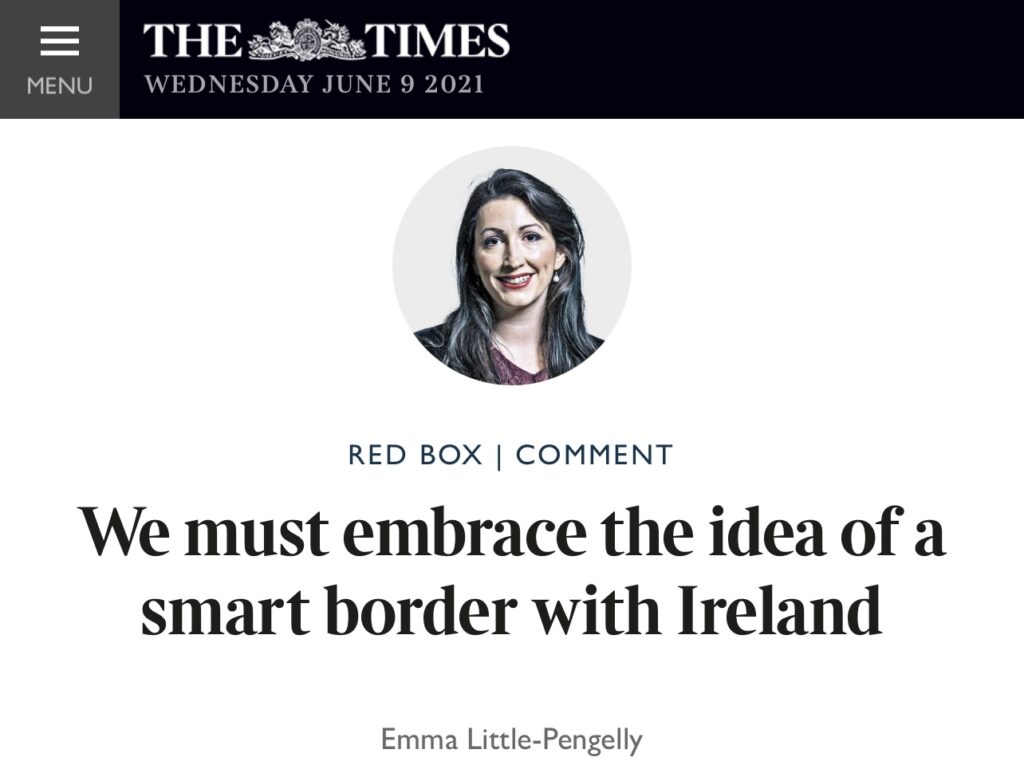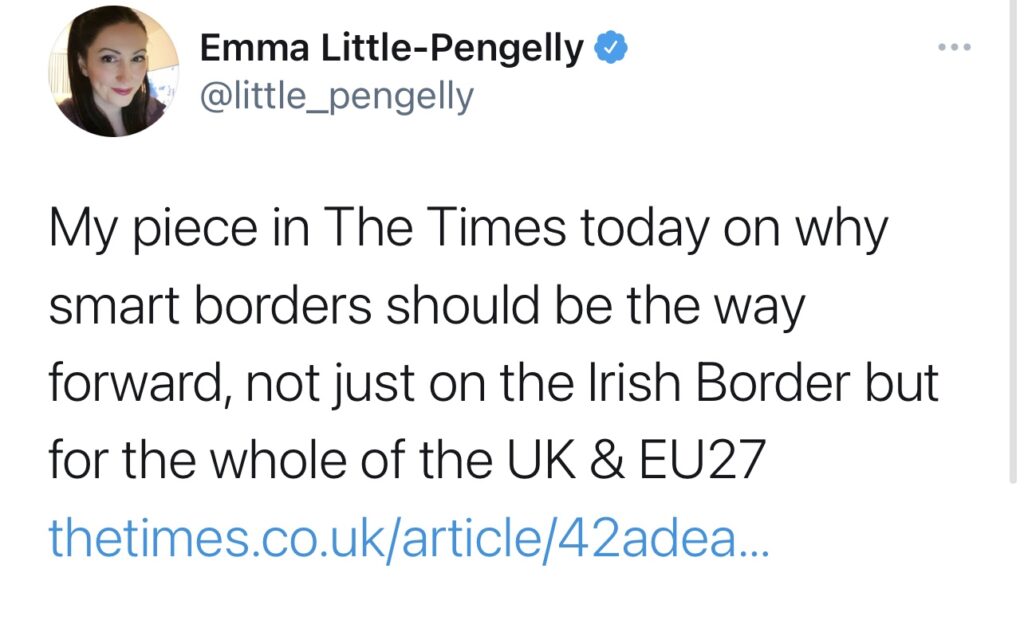”What we need is a smart border”
”What we need is a smart border”. Emma Little-Pengelly, now special advisor to the Northern Ireland First Minister and previously DUP MP for Belfast South, wrote this in The Guardian on 2018. Now the article has been re-surfaced again. And once again Twitter and aocial media goes to pieces.

Yes, what I wrote in my Smart Borders report then is still valid. The technology solutions referred to existed then and are even better today. Whatever the non-experts say.
Now maybe, with a lot of water under the bridges, I would say that a model for segmentation of clients based on risk and compliance, a Trusted Trade Plus, could and should be the platform for easements making the NIP work. Then to use the AEO Mutual Recognition Agreement (MRA) mechanism to shape the operational work. The basis for a technical agreement is already included in the TCA.
At the time Emma Little-Pengelly wrote, ”Avoiding a hard border, not just in relation to the Irish Border but for the whole of the UK, can be done by looking at smart border solutions. This works best for all of us, while ensuring the constitutional integrity of the United Kingdom and the UK internal market”.
”A European Union Committee commissioned report, Smart Border 2.0 published in November 2017, and authored by Lars Karlsson is an excellent foundation to build on. I strongly recommend that all read this — borders, in summary, need to be dragged into the 21st century”

”This is wider than the Irish border question, offering ideal solutions for the UK and the EU27. Technological advances and smart solutions exist, can be modified and put to good use. This makes sense for every border and all our UK businesses. Greater use of the existing Authorised Economic Operator (AEO) scheme, along with enhanced mutual recognition agreements, unique consignment reference numbers, number plate recognition, simplified electronic customs declarations systems and technical border surveillance are only some of the existing smart technologies that can, and should, be utilised”.
”The report demonstrates that potential solutions are available, provided there is a will to examine them. That will has been clearly lacking, not only by some here who want to wish away the referendum result, but also by the European Union negotiators”.
”We all want to avoid a hard border. We all want the best for our businesses. Yes, technological solutions and programmes take time and investment – which is why all this lamenting and hand-wringing, including attempts to subvert the will of the British people, must end, and end now”.
”Sensible and smart solutions are available – let’s just get on with it”.
There are ways to solve the deadlock of the NIP with existing models and in line with the intwrnational freamwork, the UK legislation and the EU UCC. Using the principles of the Smart Borders with simplifications and easements wpuld make the NIP work.
Source: TheGuardian, Twitter
You must be logged in to post a comment.